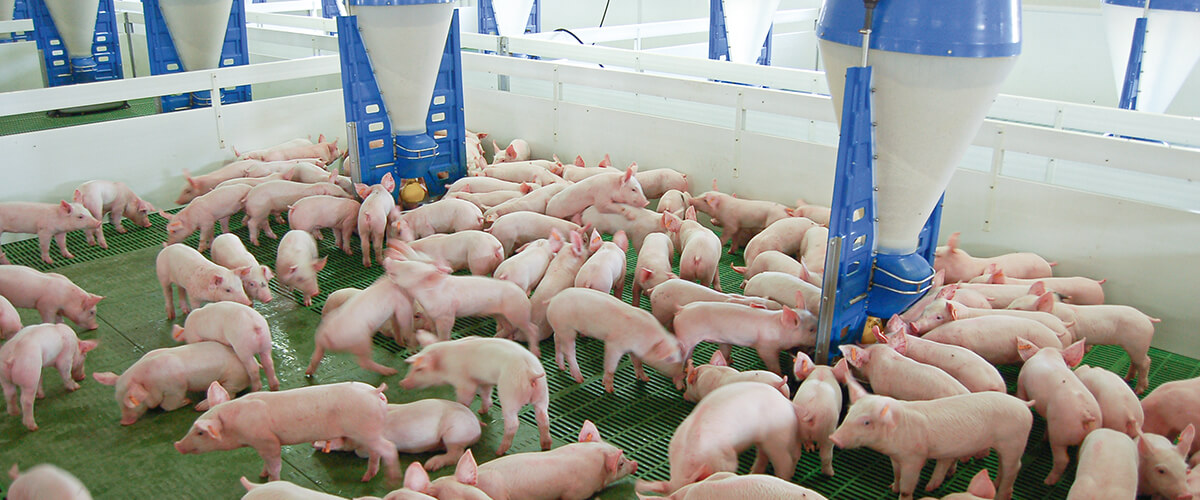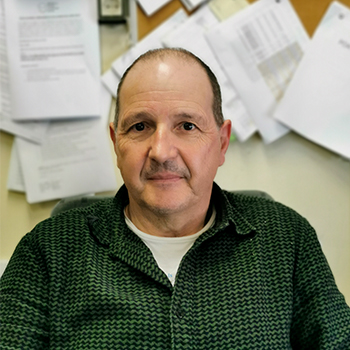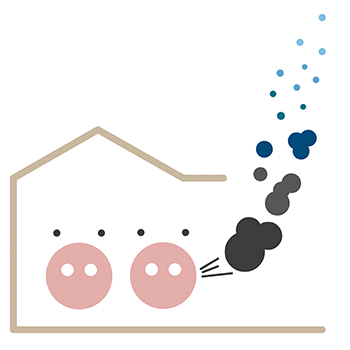Blog
Blog

D. Babot: "We can do very affordable things to reduce our emissions"
01 of July of 21 - Studies
Climate change is evidence enough that it affects society as a whole and all economic sectors. Each of us can contribute our grain of sand to reduce environmental impact. However, there are indeed specific sectors whose activity has had the most significant effect and must devote more effort to minimising it. In this sense, the pig sector has been working for years to reduce greenhouse gas emissions with good results, leading to it being an increasingly efficient and sustainable sector. In this course, in November 2020, the 'Guide to the Minimisation of Gas Emissions on Pig Farms' was published, the result of the collaboration between Interporc, the University of Lleida (UdL), the Polytechnic University of Valencia (UPV), the CEP de Lleida (Centre for Pig Studies) and the PECT (Project of Specialization and Territorial Competitiveness) project of the Lleida pig. Daniel Babot, a Professor of UDL and a researcher at CEP, is one of the guide's authors.
In 2020, the 'Guide to the Minimisation of Gas Emissions on Swine Farms' was presented. How did the initiative to create this guide come about?
Research on pig farms has evolved; the whole productivity issue took shape for a few years. Now we have been working on sustainability issues for a few years, where one factor to consider is emissions with environmental effects. In this sense, pigs have weight relevant to ammonia emissions. Thus, the guide emerges to contribute knowledge and support the sector in one of the challenges that we believe will have to face in the coming decades, as we are moving towards production models of minimal impact (water, carbon, nitrogen...). In this scenario, we decided to make a guide with the support of Interporc and the economic contribution of the PECT (Project of Specialization and Territorial Competitiveness) project of Lleida that we have been developing for four years in the Center for Pig Studies (CEP).
What is the current situation of gas emissions on swine farms?
Right now, it is difficult to give a specific number because one of the handicaps we find ourselves with is that we do not have the volume of actual emissions from farms well quantified yet. At this time, the issues are accounted for by an inventory system, which are theoretical calculation formulas that consider the number of head of livestock and the theoretical efficiency. But we don't have the actual emissions, so we have had to start here, to see how we can measure how much we emit, with the problem that there are many variants depending on various factors: slurry management, ventilation, type of animals, facilities, farm location, etc. On the other hand, efficient sensors are needed to perform measurements at an affordable cost.
"One of the handicaps we find ourselves with is that we do not
have the volume of actual emissions from farms well quantified yet."
With these handicaps, how have you conducted the study for the drafting of the guide?
In the first studies, we have worked with a model with forced ventilation to simulate field conditions. We are working on a project to make measurements on farms with natural ventilation for a year since the conditions are different and the results will also be.
What practices that the guide envisages influence the number of emissions generated by a farm?
First, we could talk about good ventilation regulation and optimisation of minimum winter vents and summer maximums because the ventilation flow factor is associated with the level of emissions; that is, more ventilation equals more emissions. On the other hand, we could talk about slurry handling, such as removing them more often from the pit without generating turbulence (gravity evacuation systems) or having less pit surface on farms. Animal housing conditions can also be considered, such as keeping pigs cleaner and drier to avoid moisture areas, using less porous grids (plastic), retaining less moisture, and expanding blind regions to reduce the emission surface. Aspects such as feeding: using low protein feed, we will have slight protein surplus in the diet, less nitrogen in slurry and therefore less emission. These are all strategies that help reduce gas emissions.

Daniel Babot, professor at the University of Lleida and CEP researcher. Photo: Daniel Babot.
These are all things to be applied within the farm, but measures are also envisaged in the slurry management. Could you mention any of them?
In this sense, some techniques have been studied less, but that can be effective, such as using some additives for slurry that retain nitrogen, although costs are often a problem. On the other hand, we would apply slurry in the fields as fertiliser within a circular economy model framework. Thus, we have soil and different systems of treatment of slurry.
Is the sector doing things right?
I think that, in general, the pork sector does things very well. Hence, one of the goals we pursue with this guide is to transmit and show that we are very efficient. We develop excellent feed conversions because we have good health, handle pigs well, optimise food, reduce water use (between 15 and 30% less, which implies a lower volume of slurry, and less nitrogen emission) etc. This needs to be communicated and clear that the pork consumed is produced as efficiently as possible. On the other hand, we have as a challenge to demonstrate the significant contribution that technology can represent for our sector: in equipment, in air conditioning... If we apply it well, we will produce more efficiently and sustainably, giving us great potential as a sector.
What objectives do you expect to achieve with the guide?
We mainly have two objectives. First, to continue to raise awareness of gas emissions as an issue that should not be set aside. On the other hand, even if the gases are not visible, it must be shown that they can be quantified, that the farmer can install sensors on his farm, at a reasonable cost, to have an estimate of the gases it generates and, therefore, work to reduce them. Our studies have focused on showing that we can achieve reductions of between 15-30% of ammonia emissions in the coming years only by quantifying and improving production conditions. On farms we can do many x and very affordable things, to reduce our emissions.
Is there currently a legal framework governing these emissions?
There are aspects such as the management of slurry where the law has arrived, but the issue of emissions is still under discussion worldwide, although it is clear that they must be reduced and climate change fought. However, there are still no concrete guidelines, and I think they will appear in about ten years. The first step, however, will be to be able to quantify what the actual emissions are.

Image of the ''Guide to minimising gas emissions on swine farms'. Photo: Daniel Babot.
Do you know if there are ranchers who are putting this guide into practice?
Our intention was not only to publish the guide but also to hold workshops with farmers, which we are now starting to do online because of COVID-19. On the other hand, I know that some companies have begun to install gas sensors to begin collecting data. However, we must continue to work and make more propagation, and we are in that line of work.
Is the work to minimise emissions a significant investment?
To quantify emissions on a pig farm that has a ventilation system with which you can control more or less the direction of air (which is fundamental), you only have to install two or three ammonia sensors to know where we are and apply corrective improvements, so the costs are not high. It is another thing to consider implementing a more ambitious strategy, such as changing the structure of the farm pits, which would mean a significant investment. In this sense, what needs to be done is assessing each case and seeing what can be done on existing farms and what can be done on newly built farms, where I believe that the sector should consider specific base improvements.






